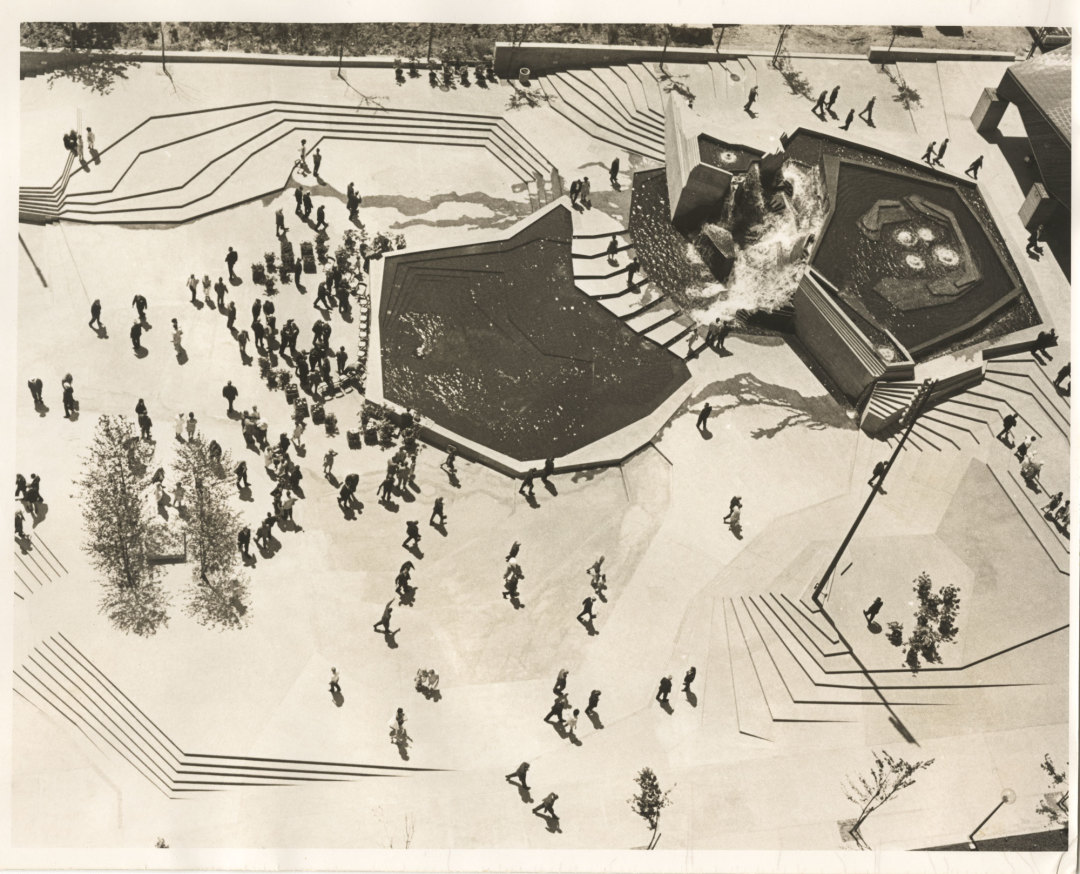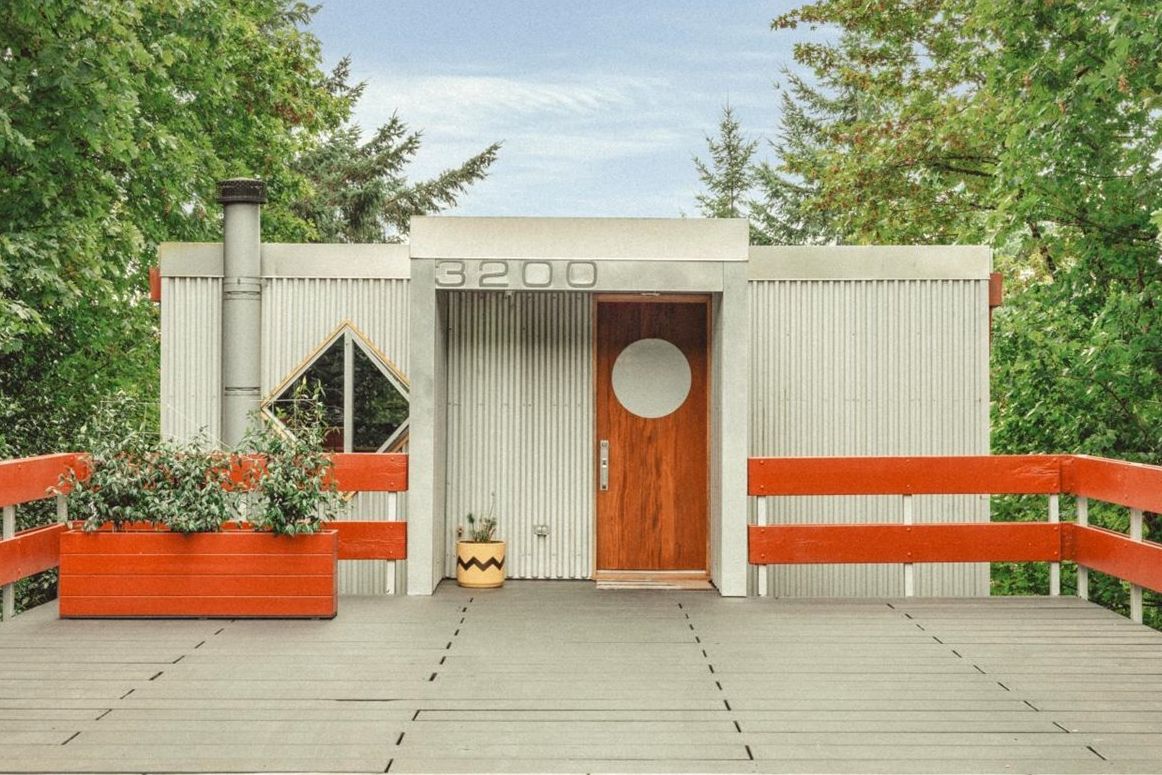The Visionary Parks Designer Who Transformed Portland

About half a century ago, Portland turned its eyes to an unexpected problem. Just months after the city opened its first new parks of the 20th century, one of them—Lovejoy Fountain—was infested. With hippies. They “have literally taken over the fountain,” thundered the manager of a new apartment tower nearby, “as their private swimming pool, laundry area, bathing area, bedroom area for extracurricular activities....”
The location: Portland’s first urban renewal zone, the South Auditorium District, a slice of downtown between SW Market Street and what’s now Interstate 405. In 1958, after a narrow public vote and a $12 million dose of federal funds, the city had started bulldozing 54 blocks that were the historic home of its Italian and Jewish communities. The boosterish Oregon Journal best captured the postwar zeitgeist, as cities across the nation scraped away old urban neighborhoods: “Sometimes progress depends on destruction.”
Suffice it to say plans for the new “Portland Center”—pristine white concrete towers, fountains, tree-lined pedestrian paths—showed no flower children. But here they were. One upright citizen, Rev. Vernon Schroeder of the Christian Faith Church, would call the bohemians frolicking in the city’s open spaces a “malfunction within the body ... a malignancy.” Yet, in hindsight, the new parks—hippies included—energized the body politic to reshape downtown Portland.
A funny thing happened to the federally funded effort to “Perk Up Portland”: a landscape architect named Lawrence Halprin and his wife, dancer Anna Halprin, slipped something into the water.
Lawrence, a dashing Harvard grad, came to early-’60s Portland packing star status unusual for a landscape architect, a position typically well down the city-shaping hierarchy. He had designed San Francisco’s Ghirardelli Square, and planned the 1962 Seattle World’s Fair as well as Sea Ranch, an innovative California coastal community. He dealt directly with Ira Keller, boss of the Portland Development Commission and one of the city’s most powerful leaders ever. Keller’s charge to Halprin: create a new public space “so good that in itself it becomes a lovely feature of living [here].”
Lawrence responded with radical designs inspired, in no small part, by his wife. Anna Halprin was in the midst of blasting ballet classicism out of dance; she and her company frequently risked arrest for the genre-busting Parades and Changes, pioneering in its intentional use of onstage nudity. Lawrence followed every step, drawing notebooks in hand. As 1965 unfolded, his notebook pages intermingled his notes from Portland design meetings and sketches for Parades’ Stockholm debut, obliterating the line between stage and urban design. “The theater is our landscape,” he wrote. “We are a family of people who move through this landscape.” Below a sketch of Lovejoy Fountain’s opening day 1966, Halprin scrawled that it should be a stage for “dance events with dancers all over.” (The photo at left, from 1967, reveals his design’s geometric drama.)
In a way, the hippies who descended on the new park just fulfilled the Halprins’ cues. But an even more extraordinary choreography followed for Portland’s downtown—particularly given the turbulence elsewhere in the country. In the four years following the Lovejoy’s July christening, Portlanders demanded that downtown’s riverside highway be torn up for a park; PDC invited Halprin’s firm back to design the even-more-radical Forecourt Fountain (later renamed Keller) at SW Clay and Third; and city leaders voted down a proposed multistory parking garage on the site that would become Pioneer Courthouse Square. Portland’s stagnant downtown had, somehow, danced to center stage of an unlikely American urban renaissance.
Meanwhile, Martin Luther King Jr. and Robert Kennedy were shot in Memphis and Los Angeles, and campuses and cities across America swarmed with protest. In May 1970, just before the Forecourt Fountain’s dedication, the Kent State shootings sparked riots on the nearby South Park Blocks. And yet the new Halprinian/Portlandian ethos gushed forth all the same. Photos and films shot at the Forecourt’s dedication tell of tensions turned: City officials gaily posed for pictures. Students gathered. Police looked stern. Taking the microphone, Lawrence Halprin addressed the crowd.
“These very straight people somehow understand what cities can be all about,” he said, referring to the officials but clearly addressing the students. “I hope this will help us live together as a community both here and all over this planet earth.” As the fountain’s cascade quickly swelled to its 13,000-gallons-per-minute flow, everyone—hippies, straights, and Halprin—dove into the new swimming hole.
Today, the South Auditorium District quietly thrives, even though (or maybe because) it’s missing from Portland’s roster of gentrifying neighborhoods.
New apartment towers are rising, and a grocery store is planned for SW Fourth Ave and Harrison. Even so, as we approach the 50th anniversary of the Lovejoy Fountain, Halprin’s classic work in the neighborhood needs love of a different sort—to address cracked concrete, overgrown trees, and the fact that the architect’s enchanting nocturnal lighting scheme is mostly dark. Next year, an ambitious rest-oration campaign aims to supply some necessary repairs. The need speaks to an opportunity, to reach back half a century and harness another sentiment Halprin voiced that sunny 1970 day: “Remember we’re all in this together.”
Portland Monthly contributor Randy Gragg is on the board of the nonprofit Halprin Landscape Conservancy.




